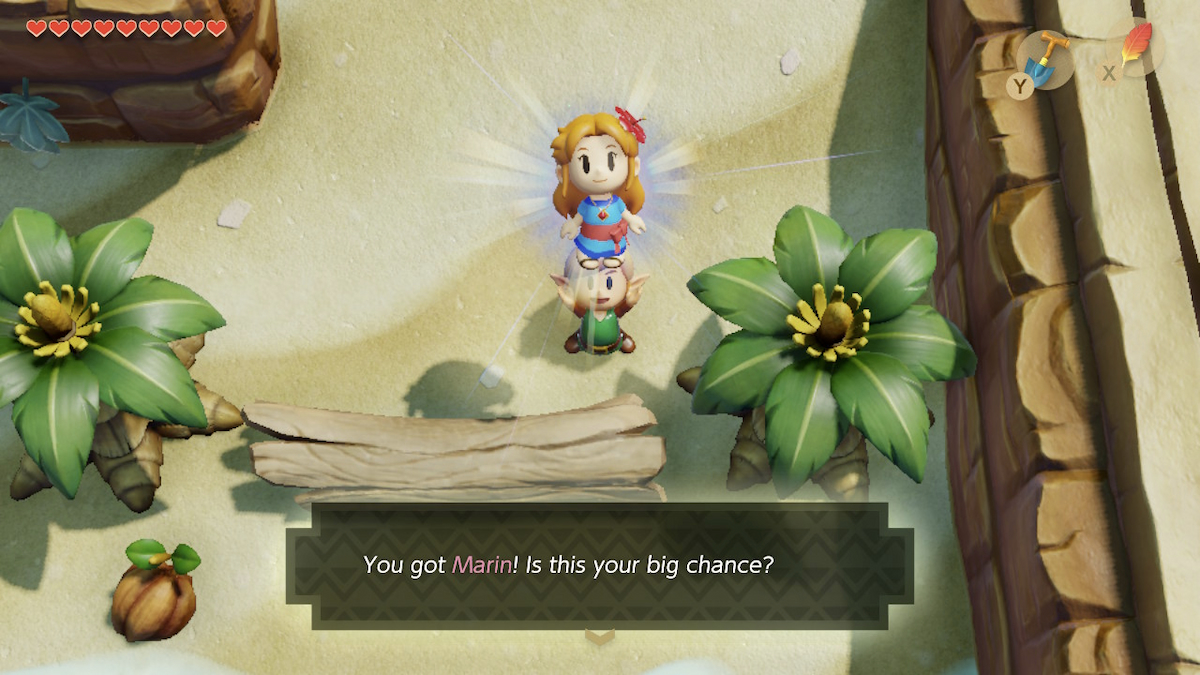It’s dangerous to go alone
My favorite moment in the Zelda franchise, without question, is when Link picks up Marin like an item in Link’s Awakening. No matter how many times I see it, the “do-do-do-doooooo” and flavor text describing Marin always gets a laugh out of me.
It’s the type of meta-joke that I could see a cheeky indie developer making in 2010. Except this is an official Nintendo Zelda game from 1993. Honestly, this may be the first joke I ever laughed at in a video game. Like everything in Link’s Awakening, this moment is whimsical, silly, yet strangely poignant. It’s scenes like these that make Link’s Awakening my favorite Zelda game ever made.
Yet what if I told you that this scene was more than a good laugh? That its meaning extends far beyond the bounds of Link’s Awakening and into the Zelda franchise as a whole? As many Zelda fans know, Marin would never return in a mainline Zelda game. However, not only can we feel her presence in every Zelda game since, but other Nintendo flagship franchises as well. Join me as we unpack the seed that blossomed into gaming’s most foundational love story.
NOTE: The following contains spoilers for A Link to the Past, Link’s Awakening, and Ocarina of Time.
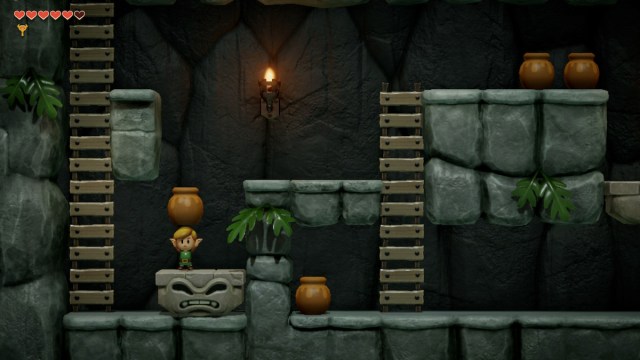
A parody of a Zelda game
If you know anything about the development of Link’s Awakening, you know it was never going to be a “normal” Zelda game.
Developed after the release of the legendary A Link to the Past, Link’s Awakening originally wasn’t even a Zelda game. Rather, the team working on it consisted of prominent developers from the SNES Zelda title who still had leftover ideas that didn’t make the cut. The group banded together and began testing the waters of their creativity on the Game Boy, even after they had full days of work at Nintendo developing other projects.
“We began in the free spirit of an afterschool club,” said Link’s Awakening director Takashi Tezuka, in an interview with the late Satoru Iwata. “… the contents are quite unrestrained. If you look at it, you can tell. Characters similar to Mario and Luigi appear, and Yoshi dolls appear, too.”
As development continued, the “afterschool club” realized their work began to look impressive. The team pitched porting A Link to the Past to the Game Boy, but their overflowing passion morphed the game into an entirely original entry. This “unrestrained” environment let Tezuka’s team explore several ideas, even if they didn’t fit Zelda’s image at the time.
“It was like we were making a parody of The Legend of Zelda,” Tezuka told Iwata.
Notably, this unorthodox development meant series creator Shigeru Miyamoto wouldn’t join the project until it was nearly finished. While Miyamoto’s legacy speaks for itself, his views on story in video games have become infamous in recent years. In fact, his influence is often cited as a reason why the Paper Mario series relied less on story following Super Paper Mario. However, this tension over stories in video games existed inside Nintendo well before Paper Mario existed.
One writer was ready to change the status quo.

From manuals to narratives
Nintendo scholars will know the name Yoshiaki Koizumi. He’s played a prominent role in some of Nintendo’s most beloved games, including directing Super Mario Galaxy. But when he first joined the company, he merely worked on the manual for A Link to the Past. You might think this is a small job, but Koizumi began to shape the overarching narrative of the Zelda series even then.
“What was funny was that at the time, it didn’t seem like they’d really figured out what most of the game elements [in Link to the Past] meant,” Koizumi told Wired News back in 2007. “So it was up to me to come up with story and things while I was working on the manual. So, for example, the design of the goddesses as well as the star sign associated with them.”
In truth, Koizumi was a bit out of place in Nintendo’s culture at the time. With an education in film and animation, he wished to pursue video games to explore the dramatic possibilities of the media. Unfortunately, many within the company didn’t share this vision.
“I felt like I came up with this entire scenario and a backstory for Link, but nobody really seemed to care,” Koizumi explained. “They were always saying, ‘let’s not try to push the story forward too much.’”
Due to these constraints, the “afterschool club” became Koizumi’s perfect opportunity to realize his narrative ambitions.
“I came in to write the manual, as I did on the previous game,” Koizumi explained. “But they had nothing in place. So I ended up making an entire story to go along with the game. The dream, the island, that was all mine.”
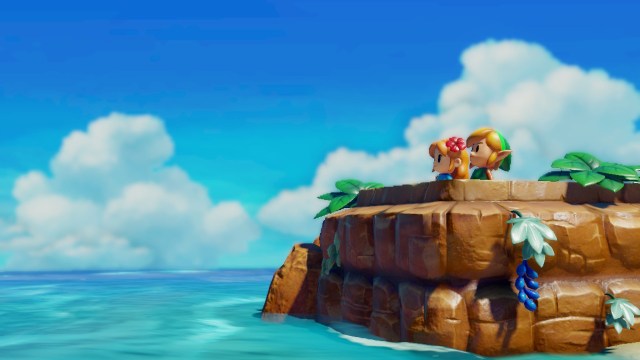
Stories, not goals
In the first three Zelda games, Zelda herself appears mostly as a plot device. While Link to the Past did develop Zelda as a character, she still primarily existed to be saved and rescued. Miyamoto was known for this kind of storytelling due to Donkey Kong, but Koizumi’s priorities were quite different.
“When you think about the whole ‘save the princess’ storyline of games being one of Miyamoto’s inventions, I don’t think of that as a story so much as it is a goal,” Koizumi told Wired News. “It’s a way of creating a situation. There’s not necessarily a buildup and a resolution of a deeper kind, like you’d find in a novel. It’s just a situation that motivates the players.”
This deviation from “save the princess” can be felt within the first moments of Link’s Awakening. The first person Link sees when he initially awakes is Marin. While Link to the Past began with a plea for help from Zelda, Marin is the one who saves Link in this case. It’s easy to read this scene as a deliberate subversion, especially given the game was once planned as a Link to the Past port.
Marin, of course, does need to be saved at least once in Link’s Awakening. She’s also needed to advance the story at times. Otherwise, Marin expresses remarkable agency throughout Link’s Awakening. There are many lines of dialogue and easter eggs involving Marin, but these don’t grant rupees or items. The only motivation to spend time with her throughout the story is just that – you want to spend time with her.
“[Koizumi is] a romantic, and I think that shows in The Legend of Zelda: Link’s Awakening,” Tezuka recalled to Iwata.
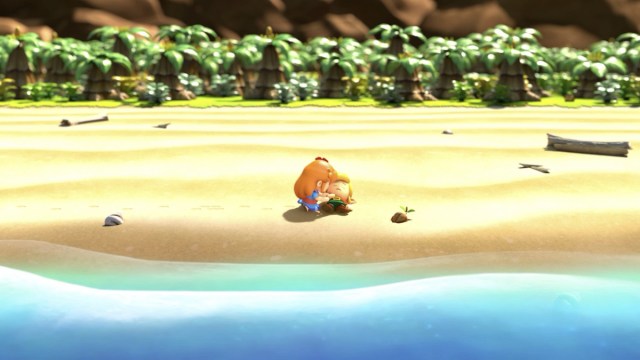
Who is Marin?
Many fans of Link’s Awakening point to Marin as the “heart” of the narrative. Yet what exactly is that heart? This receives no official explanation in game, but one theory tends to pop up over others: Marin is Link’s dream manifestation of Zelda.
While Link famously keeps his mouth shut within the series canon, we do receive occasional implied dialogue from him. In this case, we know that when Link first sees Marin, she looks similar enough to Zelda that the resemblance confuses him.
“What? Zelda? No, my name’s Marin!” She tells Link. “You must still be feeling a little woozy.”
Link’s Awakening is famously set within a dream world. In fact, the Japanese title for Link’s Awakening is “Yume o Miru Shima,” which basically translates into “The Dreaming Island.” Putting this context up front helps players view the story as symbolic. In fact, lest we believe Koholint is merely a product of The Wind Fish, the game deliberately proves Link influences the island too.
The most obvious example of this comes from the game’s very first mission. Link finds his sword and shield at the start of the quest, which the game clarifies by noting they have his name on them. At the opposite end of the adventure, we have the final battle against the nightmares. This boss gauntlet includes deliberate callbacks to A Link to the Past, including Agahnim and Ganon. Link was the only one present for these battles, so the Wind Fish’s influence can’t be all-inclusive on Koholint.
The story of Link’s Awakening works just fine if you don’t subscribe to the theory that Marin symbolically represents Zelda. But viewing Marin as a spark stemming from a feeling within Link completely reframes the narrative.
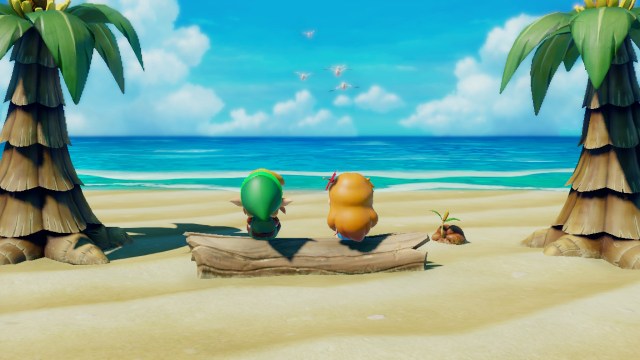
Let’s finally talk about that date
With 1,000 words of context under our belt (I swear it was necessary!), let’s finally return to the thesis of this thing; that part where Link hysterically lifts Marin over his head.
As Link’s Awakening progresses, Marin’s interest in Link intensifies. If you regularly talk to Marin in Mabe Village, she’ll explain how she loves singing The Ballad of the Wind Fish. She’ll eventually ask Link what he likes to do for fun, and even offers to sing with him when she notices his Ocarina. For Marin, it’s imperative that Link remembers this song she loves so much.
This signals early on that Marin has some awareness that her existence is fleeting. That she knows this before even the player does lends further credibility to her metaphorical significance.
But Marin’s open affection for Link reaches its peak during their famous beach scene, moments before Link’s incredible lift. Though the restrictions of the Game Boy keep this scene short, Marin’s dialogue leaves little room for ambiguity.
“When I discovered you, Link, my heart skipped a beat!” Marin excitedly recalls. “I want to know everything about you… err… uhh, ha ha ha ha!”
In games leading up to Link’s Awakening, Zelda never speaks to Link like this. While her dialogue shows admiration for Link in A Link to the Past, it is always within the context of saving the world. In fact, as Marin wonders who Link is, so too might players want to learn about Link. Does he have hopes and dreams? How does he feel about saving the world time and time again? What does he desire?
Using the language of Zelda games, Link’s Awakening finally gives us a peek inside Link’s mind.
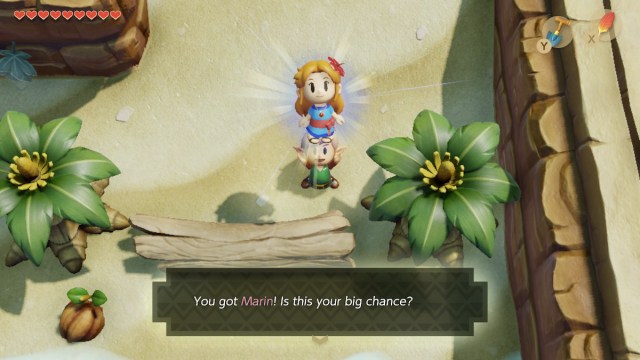
The lift that changed Link
Aside from the comedy, there’s an incredible amount of subtle meaning to unpack here.
Finding new items for Link’s arsenal is arguably the peak of excitement in early Zelda games. They expand the places you can go and the way you can interact with your environment. The “do do do dooo” fanfare exists to convey that significance to the player. By treating Marin in the same way, we get to see Link express excitement for her without breaking his established character. “Getting” Marin is a momentous occasion, and Link’s Awakening wants us to know that.
Additionally, the flavor text playfully asks “is this your big chance?” Now, the flavor text in Link’s Awakening could honestly warrant its own article. Long story short, it does occasionally convey Link’s thoughts in ways not exactly fitting an omniscient narrator. We see this most clearly when Link learns that Koholint Island is an illusion, which triggers the response “… What? Illusion?” This context lets us read Marin’s flavor text more seriously. This is a romantic moment, in no uncertain terms. You, and by extension Link, need to understand that.
The music serves as our final touch. When Link finds his sword at the beginning of Link’s Awakening, the overworld theme features an extended opening to express the significance of the moment. We don’t typically hear this added flourish throughout the game, but recruiting Marin warrants this level of importance. In the original Legend of Zelda, Link takes his sword because “it’s dangerous to go alone.” This callback to Link’s sword shows that, for perhaps Link’s first time, he isn’t alone anymore.
Put together, this conveys an overwhelming message. Marin’s feelings aren’t one-sided; Link is in love with Marin. What he wants, and why he fights, will never be the same again.
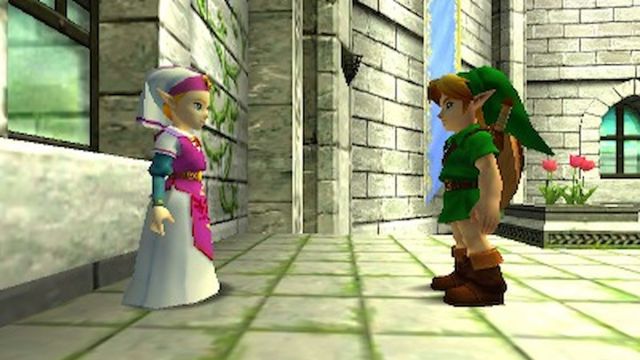
A new paradigm
Though Link’s Awakening looks like an oddity in the Zelda canon, its current creative leaders aren’t shy about its impact.
“When I was playing Link’s Awakening, I was very influenced by what the game offered,” said Breath of the Wild Producer Eiji Aonuma in an interview with Game Informer. “It definitely transferred to the other Zelda games I developed. I was recently playing through it and everything felt very nostalgic. I was like, ‘Oh right, this is something I took and maybe incorporated into Ocarina of Time!’”
Ocarina of Time has many superficial resemblances to Link’s Awakening. For example, Ocarina of Time introduces a guardian owl like Link’s Awakening does. That said, we also see Zelda also takes a more prominent role in the story starting with this title. While her dialogue focuses on the fate of the world like Link to the Past, she expresses much more intimacy towards Link within this framing.
“I wanted to wait for you, but I couldn’t delay any longer,” Zelda tells Link as she teaches him the Song of Time in a vision.
Just as Marin became associated with a song, so too does Ocarina of Time establish the importance of music. Zelda’s Lullaby technically made its debut in A Link to the Past, but Ocarina of Time gives the song story significance. Additionally, by disguising herself as Sheik after Ocarina’s famous time skip, Zelda plays an active role in the story. This sets the foundation that Zelda and Link both must work together to save Hyrule, rather than Zelda existing to, say, give an implied kiss at the end like in Zelda 2.
In fact, while the ending of A Link to the Past barely features Zelda at all, Ocarina of Time specifically ends with Link returning to see Zelda in the Hyrule Castle garden. Ocarina of Time frames Zelda and Link as two people whose paths just can’t align, even when they fight for the same cause. Ending the game by reuniting them emphasizes that the core of the story isn’t about the Triforce, Ganon, or even Hyrule. The struggle of two people who care deeply for each other is a story worth telling for its own sake.
“That must mean Koizumi-san the romantic, who was in charge of story [for Link’s Awakening], had quite a large influence over the general direction of The Legend of Zelda series,” Satoru Iwata suggested to Aonuma during their Iwata Asks interview.
“That’s right,” Aonuma responded.
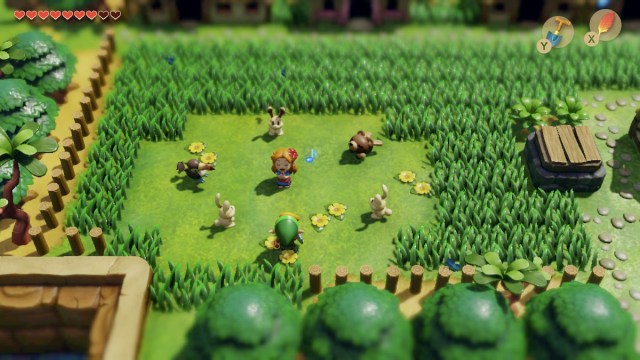
Setting Marin free
Ask many fans what they remember most about Link’s Awakening, and they’ll likely tell you about the ending. The erasure of Marin and the rest of Koholint Island evokes a level of melancholy not commonly seen in the franchise. Yet given the background and themes we’ve discussed to this point, this ending’s meaning becomes incredibly optimistic.
Marin does not hide that she wants to leave the island. She hopes to fly to faraway lands and share her song with whoever will listen. She also alludes to making a wish to the Windfish, leaving us to guess what she really desires. This makes one moment in Link’s Awakening especially stand out.
When traversing the Tal Tal Heights, Link finds Marin trapped on a broken bridge. After swiftly coming to her rescue, Marin begins to tell Link something. However, a call from Tarin interrupts her, and she leaves before we can hear what she has to say. Immediately after, our friendly neighborhood Owl arrives and informs us why Marin was there to begin with.
“That girl sang her song in front of the Egg! Her ‘Ballad of the Wind Fish’ is a song of awakening! Did she actually intend to wake the Wind Fish?!”
Just as Koizumi felt trapped in realizing his narrative ambitions for Zelda, so too does Marin feel trapped in this dream world. If she was born from a feeling stirring inside Link for Zelda, then this scene speaks volumes. Marin differs from the nightmares who want the world to stay the same. She’s ready for the dream to meet reality.
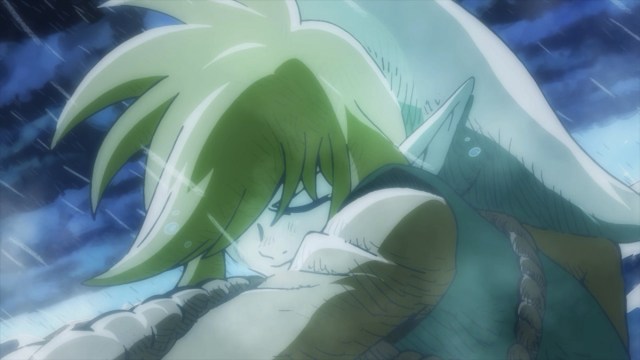
That damned smile
For the longest time, the ending of Link’s Awakening bothered me. After the melancholic montage of watching Koholint Island disappear, Link awakens on a raft barely large enough to fit on. With his head down, we hear Marin’s song somberly play. But as the song takes on an added flourish, Link looks up and sees the Wind Fish fly overhead. The Ballad of the Wind Fish takes an energetic tone, and a wide smile forms on Link’s face.
I never understood while Link would smile here. Yet after reevaluating Link’s Awakening with Yoshiaki Koizumi’s words in mind, I think I finally understand why. Just as Marin wanted to ensure that Link remembers her after he leaves, the Wind Fish repeats this sentiment before the end.
“Someday, thou may recall this island… that memory makes the dream world real.”
By seeing the Wind Fish, we know that Link remembers his time on Koholint Island. In the end, Marin’s wish reached Link. And with that knowledge, Link knows that Marin isn’t really gone. Everything that she and her song represents is free from Koholint Island now, whether she was a manifestation representing Zelda or just a girl with a dream of seeing the world.
Link’s newfound desire to kindle that flame inside his heart gives further meaning to the title Link’s Awakening. The ambiguous themes of love that surrounded the Zelda series to this point finally began to take shape.
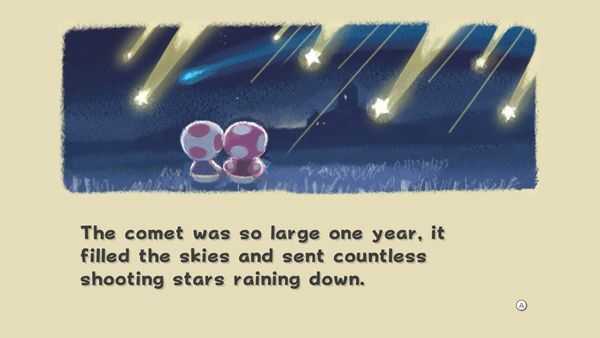
A new Nintendo
Link’s Awakening would mark a defining turn in Yoshiaki Koizumi’s career.
In 1991, he was hired to work on the manual for A Link to the Past. Three years after Link’s Awakening, he would take credit as Assistant Director for the landmark Super Mario 64. While his early memories at Nintendo evoke a melancholic lack of appreciation, later interviews would see him joking and laughing with the likes of Eiji Aonuma and Takashi Tezuka.
Even Shigeru Miyamoto, who famously butted heads with Koizumi over the presence of story elements in Super Mario Galaxy, eventually had his own moment of awakening.
“… talking over fundamental issues like Koizumi-san’s views on the importance of story, the function of stories in games… I learned something important,” Miyamoto recalled during an interview with Iwata. “Whether or not the game world resonates with you as you’re playing the game is what’s most important… I came to notice that my way of making games may have been to seek for resonance. I didn’t necessarily want to include story or not include story. Rather, I have been making games that I hope will resonate with players.”
Just as Marin awakened a spark within Link, Link’s Awakening may have marked a subtle, yet important new direction for Nintendo’s creative leaders. The idea that their flagship series’ could tell worthwhile stories took hold, and with that came some of the most beloved games of all time. When we watch the side stories within Majora’s Mask or the fully voiced cutscenes in Breath of the Wild, it feels like Koizumi’s ambitions become realized. We can’t say what Nintendo would look like today, were it not for the afterschool club that built Link’s Awakening. But when we trace Nintendo’s best stories back to their creative origins, they can all link back here.
Link lifting Marin over his head codified a spirit that we can still feel today. It marked that developers at Nintendo could decisively tell personal stories, not just grand tales of adventure. Marin remains with us, in the DNA of countless games bearing the Zelda branding and beyond. She flew to far away places and sang for many people. And sure enough, we’ve learned more about Link in every game since.
Thanks to Link’s journey with Marin, we learned the Ballad of the Wind Fish. This song, even today, remains in our hearts.


